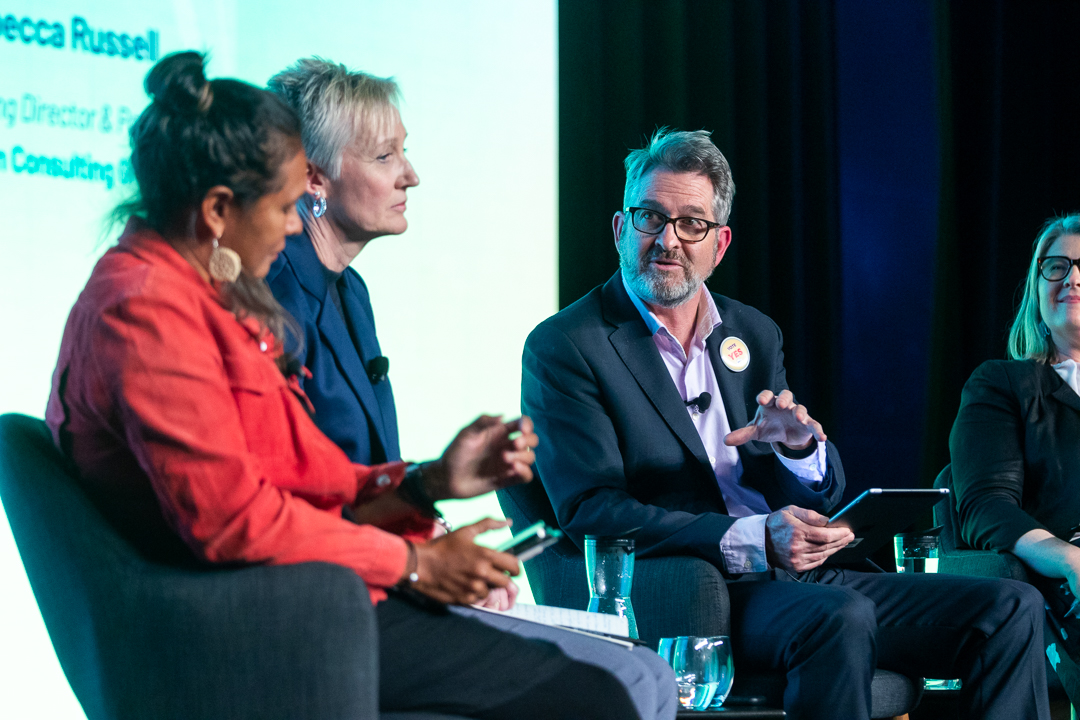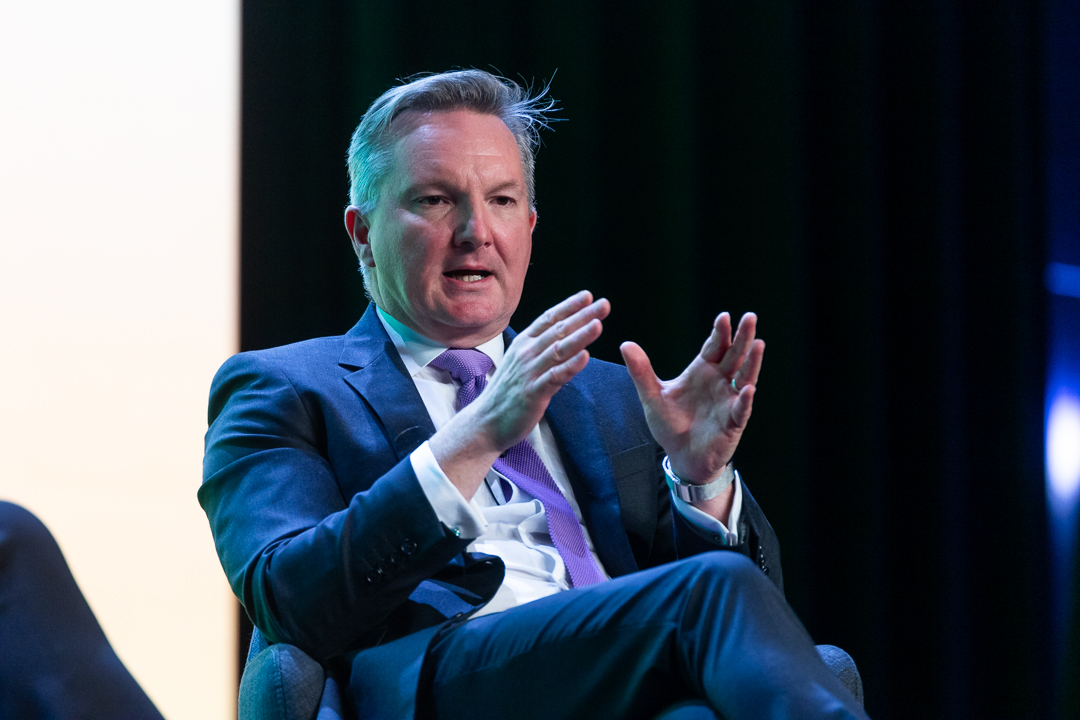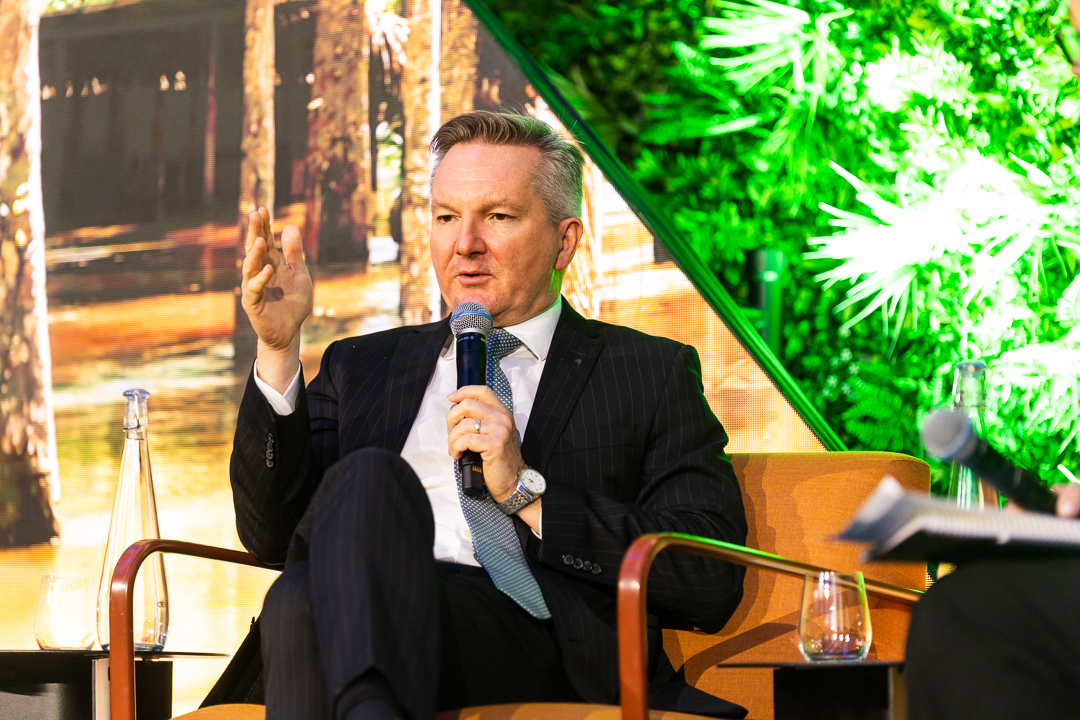Policy certainty, cheap renewable energy, a viable carbon market and partnerships are key to achieving decarbonisation in industrial and mining companies, business leaders told an emissions reduction summit today.
“What corporates like is policy clarity,” Orica chief executive officer Sanjeev Gandhi today told the Carbon Market Institute’s Australasian Emissions Reduction Summit.
“What they don’t like is moving goal posts,” Gandhi said.
Industrial facilities and mines can have a lifespan of up to 100 years, and the businesses that run them “do not want policy changing every three or four years”.
“You do not want the goal posts moving, because that does not give industry, and especially industry here in Australia, the confidence to invest in in Australia,” he said.
“In addition to policy certainty, Australia must have a viable carbon market, given that slightly more than 200 large-emitting facilities are covered by the Safeguard Mechanism”, Gandhi added.
“That’s going to be very, very critical.”
Industry also needs cost-competitive renewable energy connected to the grid, operating 24/7, “because that’s what continuous manufacturing assets need”, Gandhi said.
Government support for investment in new technology will also be essential, because decarbonising heavy industry is difficult and expensive, he said.
“It needs a lot of support,” he said. “But what we are showing in our industry is that it’s doable … it’s a transition that’s absolutely crucial.”
Ghandi pointed out that one of Orica’s sites in NSW has achieved a cumulative total of one million tonnes of abatement by implementing emissions reduction technologies.
BHP Australia president Geraldine Slattery told the summit that diesel displacement is important for mining businesses.
“Our strategy is one of the partnership with our fleet providers in investing in the research and development of battery and charging technologies, in investing in prototypes,” Slattery said.
In conjunction with its competitor and peer, Rio Tinto, BHP will later this year be bringing some electric trucks to Western Australia “to test them in the rugged environment of the Pilbara”, and to better understand power demand, and charging infrastructure needs.
Even if technological viability is demonstrated, technologies must also be commercially feasible, Slattery said.
“And then the final piece is the availability of renewable supply,” she said.
“In areas without an existing grid, such as the Pilbara, that requires engagement with government, with the power sector, with the landowners, and with Indigenous communities”, she said.
“Reducing scope 3 emissions from steelmaking requires investment in an array of technologies”, Slattery added.
Slattery told the summit that businesses must aim to meet not only their own targets but also those of the host nations within which they operate.
Frederick Teo, chief executive of Singapore-based GenZero, told the summit that the transition has to be built on the existing situation.
“You cannot choose an ideal way of getting to the next step,” he said. “You have to deal with what already exists.”
That means that if infrastructure is already in place, “you’ve got to take that as the starting point and the reality”, he said.
“So what that basically means is that imperfection or imperfect solutions are likely to have to be part of the equation. When we are talking about transition, you cannot go for an idealistic perfect solution.”
Teo added that carbon markets can channel finance into the development of solutions to the climate crisis.
He said that there are opportunities “when you are seeing macro dislocations, it is a pretty good time to actually deploy capital, if you can find the right opportunities, because you are seeing valuation dislocations, and when people are scared and people are fearful, it may be about the right time to actually show some conviction.”



